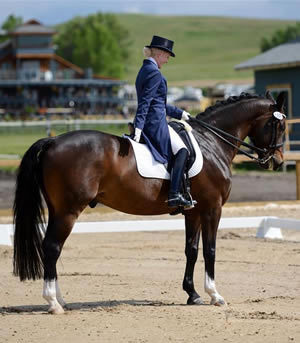History
The history of the Swedish horse closely follows that of humans in the region. Archeological evidence has been found for the existence of horses in what is now Sweden dating to 4,000 B.C. The original Scandinavian horse is said to be small, 12 to 14 hands, high spirited and having good endurance. In the sixteenth century a program was began to improve the quality of the native horses. Friesians were imported from the Netherlands to increase the size of the native stock. Other importations of various saddle breeds were made but the larger draft breeds were excluded from the importations. The major centers of this breeding was at the national stud farms of Kungs r, Str msholm and Flyinge. The horses from these farms were often used in the royal stables.
Due to differences in requirements between the two largest users of horses in Sweden, the army and farmers, the breeding program was divided. Importations were made of stallions of Throughbred, Anglo-Norman, Hanoverian and Trakehner breeds to improve the horses used by the military . In order to direct the breeding efforts and to consolidate the different breeds the Swedish government began an examination system in 1874. This resulted in several excellent saddle breeds including the Swedish Warmblood.
The Swedish Warmblood Association (SWA) was formed in 1928 by breeders, encouraged by the army, to promote the development of uniform mares of high standard. The army stopped using horses in the 1970's and the breeding program has since been fully in the hands of the SWA.
The Swedish Warmblood Association of North America (SWANA) was established in the 1980's as breeding of Swedish Warmblood horses became more popular in United States and Canada. SWANA continues the traditions of the SWA, employing the SWA breeding committee for Inspections to maintain consistency of the breed.
Behavior
Swedish Warmbloods have a reputation as strong, athletic animals with flowing gaits.
Function
The Swedish Warmblood is used as a riding horse, a job it is suitable for because of its easy, straight paces. It is also handsome, sound, tractable, and definitely versatile. Swedish Warmbloods are commonly used as dressage horses, jumpers, and in three-day event. Swedish Warmbloods are good driving horses as well and are exported in large amounts all over Europe and the United States.






